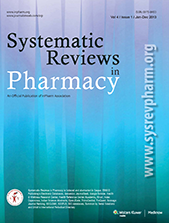Detection Of Urinary Bladder Cancer By (ATR-FTIR) Spectroscopy
Abstract
Enas Sulaiman Yousif, Duraid Taha Abdulkareem, Nafea sami Enad alboaisa and Ehab Jasim Mohammad
Due to the spectroscopic analysis sensitivity to the molecular structure and biochemical variations in the cells, it has received considerable attention recently to be a diagnosis technique of cancer tissues. In the study reported here, a spectra of Attenuated Total Reflection (ATR) Fourier Transform Infrared (FTIR) Spectroscopy, ware taken for 46 samples of urinary bladder tissues that were previously histopathologically specified by pathologist experienced as: 23 normal (N) samples and 23 transitional cell carcinoma (TCC) samples. Several spectral variations were detected in the frequency range between 400 cm-1 and 4000 cm-1.The ratio of bands intensities of A2925/A2853, A1650/A1540 and A1343/A1450 supplied conformational changes of lipids, protein and collagen respectively in the urinary bladder tissues. Between normal and cancerous tissues, there are noticeable variance in the spectral features because during carcinogenesis, the transformation from a normal to a cancerous state accompany variation in molecules structure, where the concentration of lipid is lower in cancerous urinary bladder tissues, unlike normal tissue, while the content of protein and collagen have been increased in cancerous urinary bladder tissues. These differences in the spectral information serve for the diagnosis of urinary bladder cancer and the results displayed that ATR-FTIR spectroscopy is a promising as a rapid, accurate, and simple method utilized for identification and diagnosis of cancerous urinary bladder tissues.






